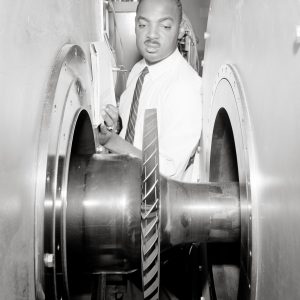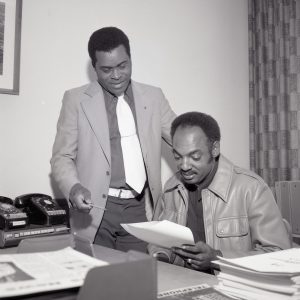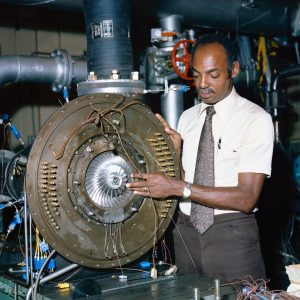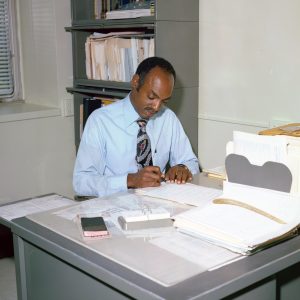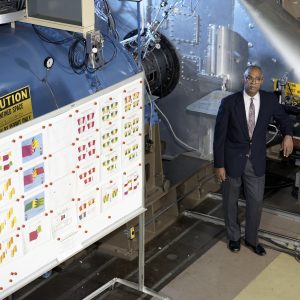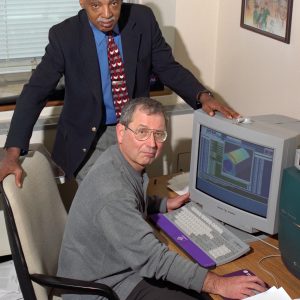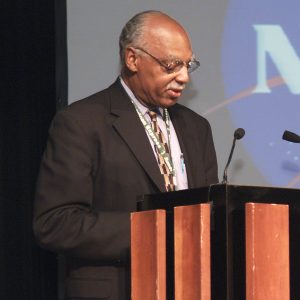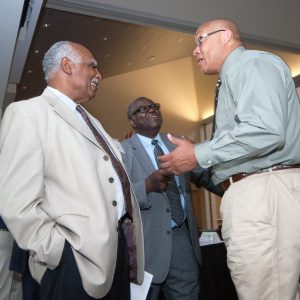Dr. Lonnie Reid
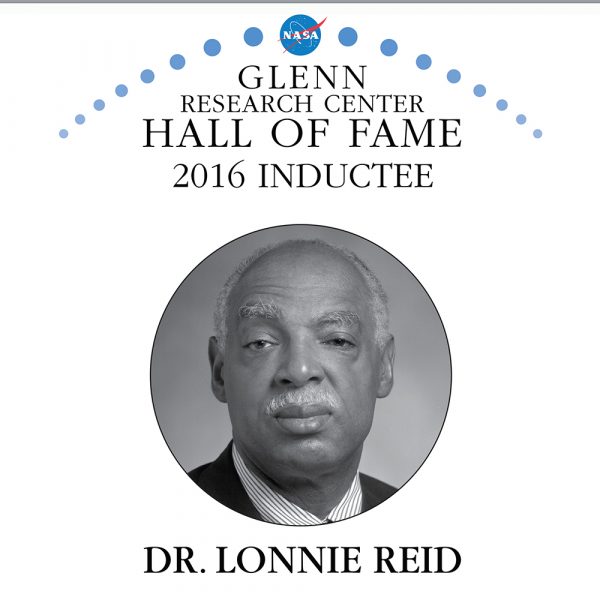
Biography
Lonnie Reid is nationally recognized in turbomachinery for his knowledge of internal flow in advanced aerospace propulsion systems. He has a long history of integrating the theoretical and experimental elements of fluid dynamics work to expand the database of compressor and fan design. He has not only demonstrated excellent leadership skills in several positions, including as chief of the Internal Fluid Mechanics Division, but has been influential in recruiting and mentoring the next generation of scientists and engineers.
Lonnie Reid was born on September 5, 1935, in Gastonia, North Carolina. After serving in the U.S. Army, he earned a mechanical engineering degree from Tennessee State University. He joined the NASA Lewis Research Center as a research engineer shortly after graduating in 1961 and spent the next 20 years as both a researcher and manager in the Compressor Section of the Fluid Systems Components Division.
In the early 1960s the group focused on improving the performance of high-speed turbopumps that pumped cryogenic propellants in space vehicles. The pumping of liquid hydrogen in near-boiling conditions, referred to as “cavitation,” was a particular concern. The fluids systems researchers improved pump designs and demonstrated the ability to pump hydrogen in cavitating conditions. These were key contributions to the success of the Centaur and Saturn upper-stage rockets.
In 1966, NASA Lewis reorganized its staff to address new aviation issues resulting from plans for a supersonic transport aircraft and the influx of jet airliners. Both areas raised concerns about noise, pollution and efficiency. In the fall of 1966 Reid was one of seven Lewis employees appointed to the U.S. Supersonic Transport Source Selection Evaluation Group. In this role he evaluated industry proposals for fans and compressors for the planned supersonic transport.
At the time, Reid also undertook a long-term effort to improve the design of transonic fans and compressors. By analyzing blade shapes, rotor tip speeds, and flow physics, Reid and his colleagues were able to increase engine efficiency and performance. Rickey Shyne, Glenn’s director of research and engineering, stated, “Dr. Reid’s research [led]… to the expansion and furtherance of the experimental database on the NACA 0012 series compressor blades which served for decades as an industry ‘gold’ standard for compressor and fan analysts and designers.”
In 1972 Reid earned his master’s degree in mechanical engineering from the University of Toledo, and in 1978 he was named head of the Fan and Compressor Branch’s Multi-Stage Compressor Section. During this period the section supported the Supersonic Cruise Research effort by analyzing the aerodynamic designs of fan and compressor components and managing the program’s basic technology elements. In 1980 he became head of the Small Compressor Section.
In the mid-1980s, the center attempted to return its Altitude Wind Tunnel (which had been converted into two space chambers in the early 1960s) to service to support advanced icing research. Reid was named head of the Aerodynamics Section in the AWT Project Office in 1984. There he directed the complex physical and computer-modeling program used to determine if the new tunnel components would meet the design requirements. Although funding for the AWT effort was cut, Reid and his team enhanced the performance of the tunnel components and developed flow-modeling tools that have been subsequently applied to the design and improvement of other NASA wind tunnels.
Reid was named chief of the Computational Applications Branch in 1986. His branch applied computational fluid dynamics codes to the design of engine components and verified the codes with physical testing. The following year Reid was appointed head of the Turbomachinery Technology Branch, where he managed the turbomachinery flow physics research for a wide range of aircraft. Reid and his engineers also developed the first supersonic through-flow fan design for turbofan engines. The device allowed the size and weight of turbofan engines to be reduced while offering competitive performance at supersonic cruise speeds. In 1989 Reid earned his Ph.D. from the University of Toledo, studying three-dimensional flows near the wall in transonic compressors.
In 1989 Dr. Reid was promoted to chief of the Internal Fluids Mechanics Division and appointed to the Senior Executive Service. He was the first African-American employee at the center to achieve either position. As division chief, he worked closely with industry to facilitate technology transfer, identify areas of turbomachinery and flow physics that required research, and ensure that the division addressed those concerns. He retired in October 1993 with 32 years of NASA service.
Dr. Reid returned to the center to work as a contractor for 5 years. In 1998 he founded AP Solutions, Inc., to provide NASA’s computational fluid dynamic code designers with technical expertise to support aeropropulsion work. The company has supported the Ultra Efficient Engine Technology program, the General Aviation Program, and the development of the Joint Strike Fighter.
In addition to his technical and managerial accomplishments, Dr. Reid has a long legacy of mentoring local students and recruiting young engineers for the center. In addition, he served as a role model for many young employees who have gone on to successful careers at NASA and in academia. Dr. Reid promoted positive morale through leadership of a variety of activities such as charity drives, educational outreach, diversity awareness, and wellness activities.
Dr. Reid has received many awards throughout his career, including NASA’s Exceptional Service Medal in 1989, Senior Executive Service in 1990, and induction into the Ohio Science, Technology and Industry Hall of Fame in 2003. He has lectured at several universities and served as a consultant on several boards and committees.
Dr. Reid’s long and distinguished NASA career epitomizes his commitment to excellence. He has left an enduring legacy in the field of turbomachinery and with a generation of engineers who have benefited from his technical knowledge and his personal interest in their success.
Documents
- Lonnie Reid Articles (1966-2006)
- Reid Superstars of Science Bio (1998)
- Reid Tapped for Ohio Science Hall of Fame (1993)
- Reid AP Solutions Biography (2019)

